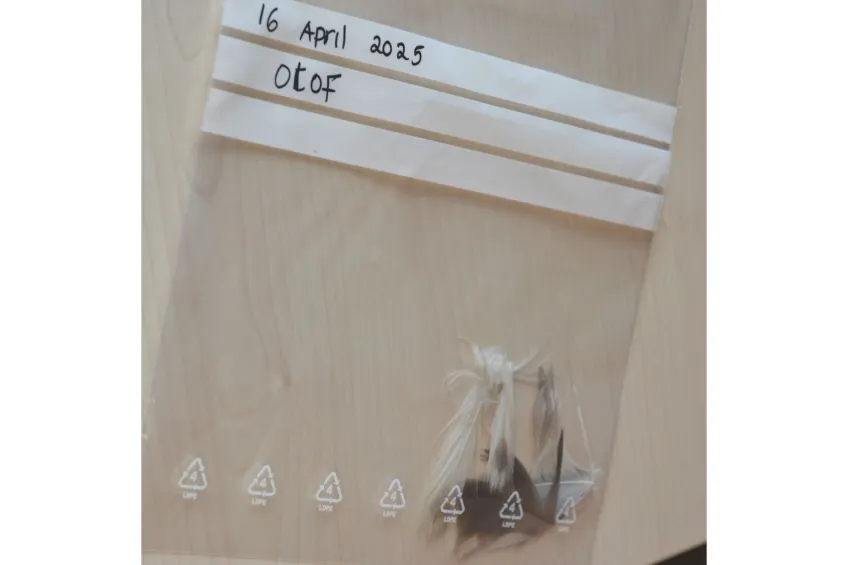Olof the bird – a stuffed bird of prey with a stern expression – currently stands in the heart of The Science Student Union (LUNA), keeping watch over students’ discussions and union activities. But few are eager to get too close. A sign next to him warns that his plumage contains arsenic.
The warning has become a talking point – is Olof really so toxic that he should be placed behind protective glass? Or is this just a classic student prank with an overly dramatic label?
— "There are historical examples of arsenic being used to preserve taxidermied animals, but it varies a lot, and the method hasn’t been used for a long time. Still, Olof has a clear warning sign – and we need to take that seriously until we know the facts," says Charlotta Turner, professor of analytical chemistry and vice dean for undergraduate and master's education at the Faculty of Science.
It was Charlotta who first suggested examining Olof’s plumage, shortly after a new, ultra-sensitive measuring instrument had been installed at the Department of Chemistry.
Following up on that idea, Fiona Nermark, a postdoctoral researcher in analytical chemistry, visited LUNA’s student room in the Astronomy Building in mid-April to take feather samples from Olof. The samples were then analysed using the newly acquired instrument – the first of its kind in Sweden.
The analyses are now complete – and the mystery is about to be solved!
A powerful tool for metal analysis
The technique used – supercritical fluid chromatography coupled with inductively coupled plasma mass spectrometry – enables the detection of extremely low levels of metals and organometallic compounds.
This new analytical infrastructure is available to researchers at both the Faculty of Science and the Faculty of Engineering (LTH), thanks to joint funding from the faculties and Lund University’s central research infrastructure support. Researchers from other faculties and external partners are also welcome to use the facility at the Department of Chemistry.
Interest is already high – with applications ranging from plant, food and pharmaceutical analysis to the study of both toxic and beneficial organometallic substances in the environment.
Putting the instrument to work
— "It’s been great fun to test the instrument on something as unexpected as a stuffed bird!" says Fiona Nermark when we meet her at the Department of Chemistry to review the results.
— "This is an important tool, not only for my own research but also for the department as a whole. For instance, I analyse coal from Botswana to explore whether valuable substances can be extracted before combustion. I also study different forms of arsenic in seaweed intended for human consumption. I'm really looking forward to using the instrument in a wide range of future projects," she continues.
— "Analytical techniques like this are also an important part of our undergraduate and master's programmes. Students need hands-on experience with modern methods to prepare for their future professional roles," adds Charlotta Turner.
The results are in...
The analysis shows that Olof’s plumage contains traces of arsenic – and quite a lot, in fact! Around a thousand times more than what’s found in a rice cake. Traces of lead were also detected. This confirms that the warning might not be entirely unfounded, although the detected levels do not necessarily pose any immediate health risk.
— "We should probably continue to keep our distance from Olof – and leave the sign in place. ‘See but don’t touch’ seems like a good rule going forward. But we’ve been told it’s not dangerous to be in the same room with him, so he’s welcome to stay and keep watch over our student union work," says Sanela Lulić, president of LUNA.
Now that the mystery is solved, the big question remains: where does Olof come from – and what kind of bird of prey is he, really?
Text and photo by Cecilia Schubert, Communications Officer at the Faculty of Science Office.








